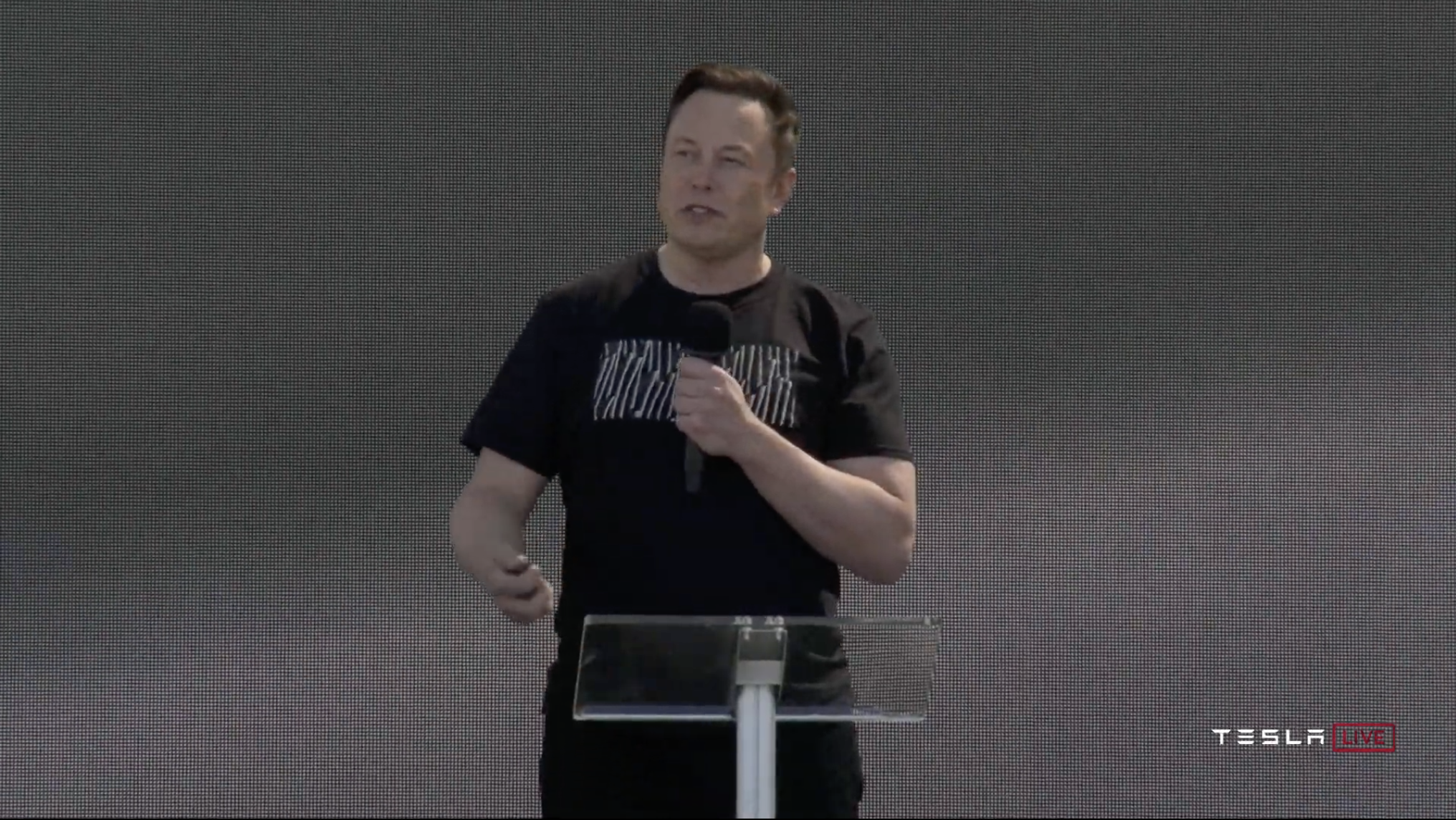
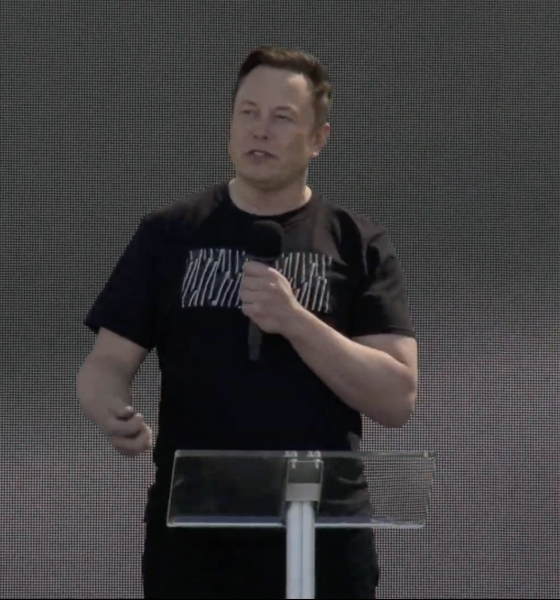
News
Tesla’s Elon Musk strikes diplomatic note on climate change, oil and gas in podcast interview
Tesla CEO Elon Musk has been outspoken on many issues over the years, and as the leader of the most successful electric car company in the world, it’s not surprising when his comments are aimed at skeptics of climate change and promoters of oil and gas industry expansions. That said, Musk is also quite aware of the nuances involved with industry that make things less binary than green energy advocates often frame them. In a recent podcast hosted by Kara Swisher called Sway, the serial entrepreneur took a more diplomatic tone than usual when discussing our planet’s future, fossil fuels, and the people involved in their production.
Swisher’s interview style is straightforward, and her opinions on matters under discussion are barely veiled. After a rocky start that prompted Musk to become a bit combative in his replies (“Sell your stock, I don’t care. What’s the point of this podcast?”), their discussion made its way to the emerging climate-focused market and steps being taken by governments both in the US and around the world. “I think these are all indications that the end of fossil fuel vehicle is nigh,” Musk replied in reference to his thoughts on California Governor Gavin Newsom’s latest executive order banning the sale of new fossil fuel vehicles by 2035.
Building further on that topic, the Tesla CEO also offered less-dire thoughts about where Earth is headed if the transition to sustainability is hindered. “I do not think this is actually the end of the world. I just think things get riskier,” Musk said after referencing the unprecedented growth of CO2 ppm currently in the atmosphere. “We need to think in terms that are not super binary… The actions that we take change the probability that the future will be good.” While his comments were somewhat positive, he still kept a realistic focus. “If you think of how civilizations have developed, we’ve put ourselves right on the edge of the water. If that water level rises even a little bit, you’ve got major problems.”
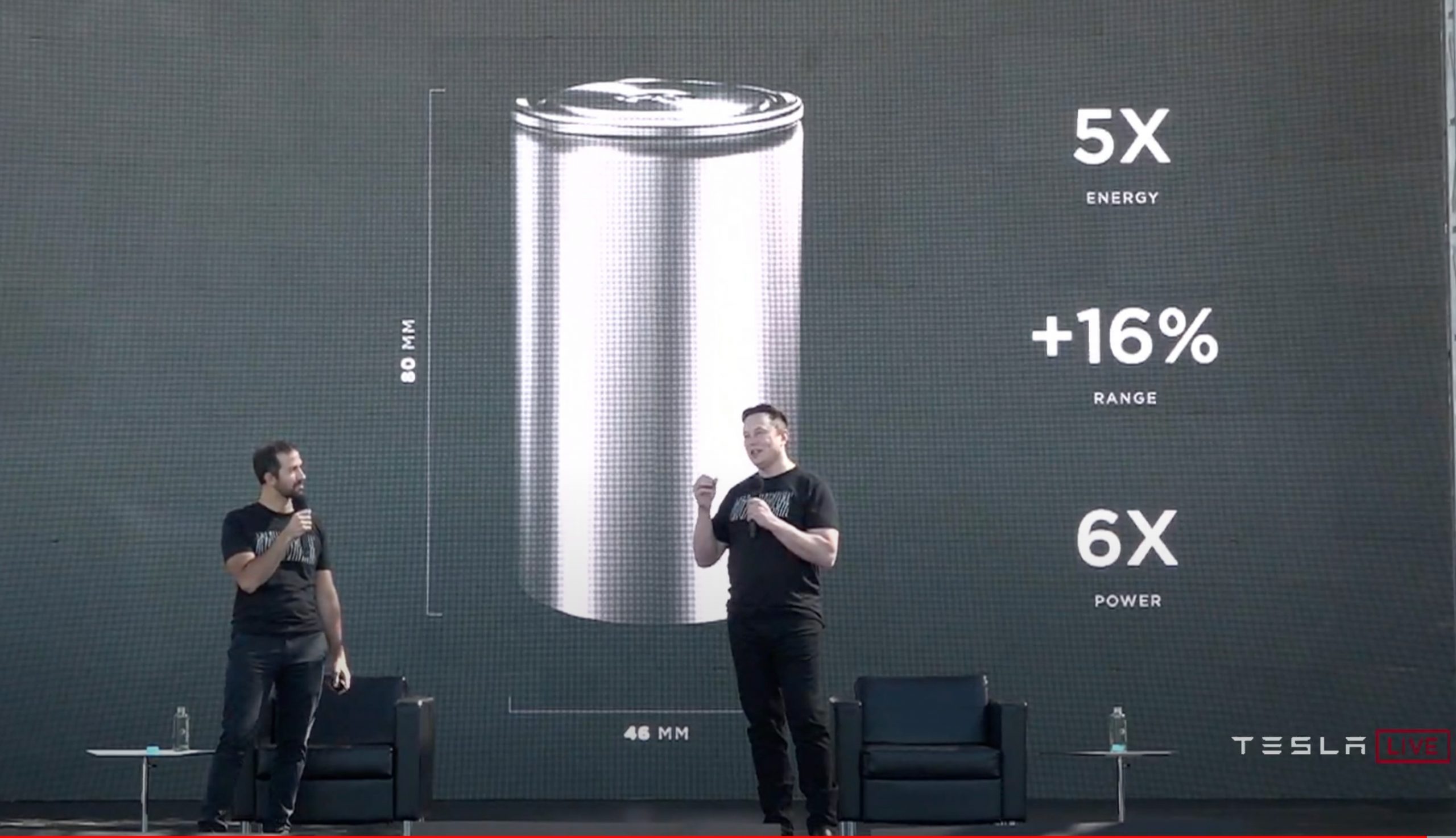
In yet another unusual diplomatic stroke, Musk also had sympathetic words for people who’ve worked in the oil and gas industry as a career. “Honestly, I feel a bit bad about hating on people in the oil and gas industry,” he admitted. “For a lot of people in the oil and gas industry, especially that are on the older side, they kind of built their companies and did their work before it was clear this was a serious issue… And now…people are kind of making them out to be villains when for the longest time they were just working hard to support the economy and didn’t really know it was gonna be all that bad.”
Swisher pointed out that it was odd for Musk to speak on behalf of the industry he’s been so tough on in the past, but Musk reminded her that his foray into electric cars was more about running out of oil vs. the dangers of burning it and releasing the CO2 into the atmosphere. In his early years, the Tesla chief wasn’t aware of the environmental impact of fossil fuels as much as understanding that running out of them would bring the collapse of civilization.
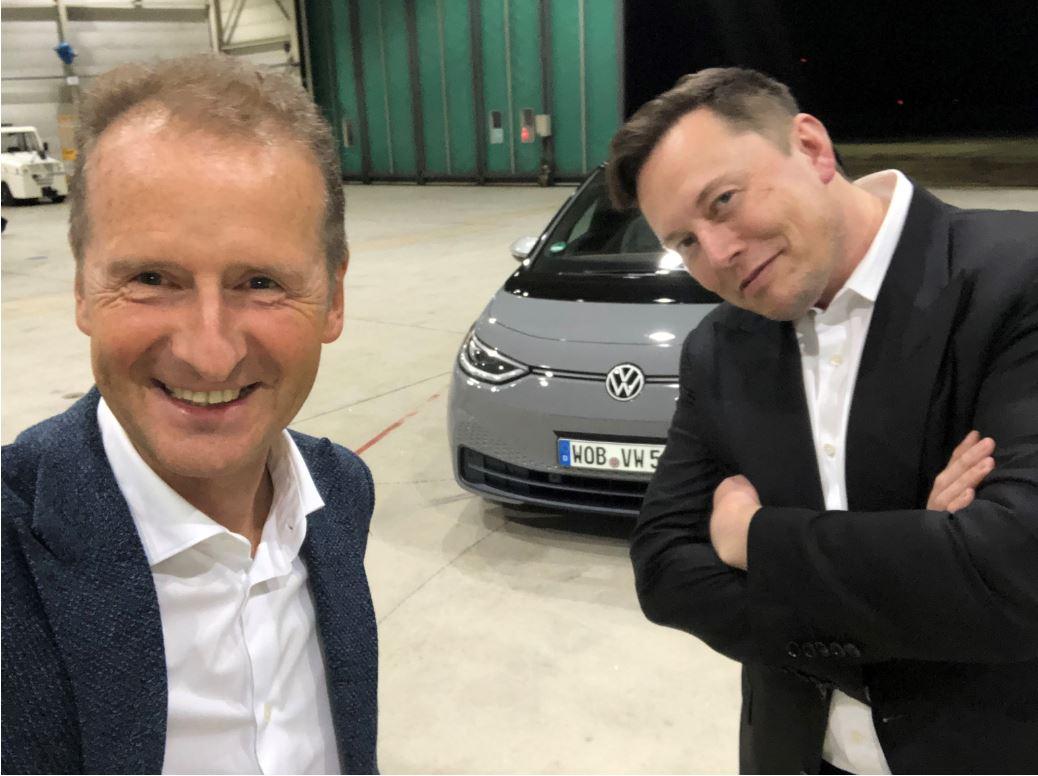
Musk’s diplomacy then made it all the way to the White House. “Arguably, he’s been as supportive as he can be on the electric car front, recognizing that a massive part of the Republican support is coming from oil and gas,” he noted in reference to US President Donald Trump after Swisher inquired about his political positions in the upcoming elections. After a further challenge from the podcast host over policies taken up by political parties, the CEO refrained from taking a hard-and-fast position. “If you’ve got a two-party system, then the problematic issues are gonna kind of fall somewhat randomly into one party or the other. Like, it’s not clear to me that there’s a cohesive set of reasoning why these things are in one party vs. another. They seem semi-random.”
The Sway episode touched on nearly every topic Musk is involved in – artificial intelligence, Neuralink, and SpaceX included. There was one other issue, though, that he had not-so-diplomatic words to offer. “The press coverage of [Battery Day] was sad. Most of the press takeaway was a sad reflection of their understanding, really,” he lamented. “I’m also not trying to convince people that much. The results will speak for themselves… We have had cars driving with those cells since May.”
You can listen to the full Sway podcast interview with Swisher and Musk here.

News
Man credits Grok AI with saving his life after ER missed near-ruptured appendix
The AI flagged some of the man’s symptoms and urged him to return to the ER immediately and demand a CT scan.

A 49-year-old man has stated that xAI’s Grok ended up saving his life when the large language model identified a near-ruptured appendix that his first ER visit dismissed as acid reflux.
After being sent home from the ER, the man asked Grok to analyze his symptoms. The AI flagged some of the man’s symptoms and urged him to return immediately and demand a CT scan. The scan confirmed that something far worse than acid reflux was indeed going on.
Grok spotted what a doctor missed
In a post on Reddit, u/Tykjen noted that for 24 hours straight, he had a constant “razor-blade-level” abdominal pain that forced him into a fetal position. He had no fever or visible signs. He went to the ER, where a doctor pressed his soft belly, prescribed acid blockers, and sent him home.
The acid blockers didn’t work, and the man’s pain remained intense. He then decided to open a year-long chat he had with Grok and listed every detail that he was experiencing. The AI responded quickly. “Grok immediately flagged perforated ulcer or atypical appendicitis, told me the exact red-flag pattern I was describing, and basically said “go back right now and ask for a CT,” the man wrote in his post.
He copied Grok’s reasoning, returned to the ER, and insisted on the scan. The CT scan ultimately showed an inflamed appendix on the verge of rupture. Six hours later, the appendix was out. The man said the pain has completely vanished, and he woke up laughing under anesthesia. He was discharged the next day.
How a late-night conversation with Grok got me to demand the CT scan that saved my life from a ruptured appendix (December 2025)
byu/Tykjen ingrok
AI doctors could very well be welcomed
In the replies to his Reddit post, u/Tykjen further explained that he specifically avoided telling doctors that Grok, an AI, suggested he get a CT scan. “I did not tell them on the second visit that Grok recommended the CT scan. I had to lie. I told them my sister who’s a nurse told me to ask for the scan,” the man wrote.
One commenter noted that the use of AI in medicine will likely be welcomed, stating that “If AI could take doctors’ jobs one day, I will be happy. Doctors just don’t care anymore. It’s all a paycheck.” The Redditor replied with, “Sadly yes. That is what it felt like after the first visit. And the following night could have been my last.”
Elon Musk has been very optimistic about the potential of robots like Tesla Optimus in the medical field. Provided that they are able to achieve human-level articulation in their hands, and Tesla is able to bring down their cost through mass manufacturing, the era of AI-powered medical care could very well be closer than expected.
News
Tesla expands Model 3 lineup in Europe with most affordable variant yet
The Model 3 Standard still delivers more than 300 miles of range, potentially making it an attractive option for budget-conscious buyers.

Tesla has introduced a lower-priced Model 3 variant in Europe, expanding the lineup just two months after the vehicle’s U.S. debut. The Model 3 Standard still delivers more than 300 miles (480 km) of range, potentially making it an attractive option for budget-conscious buyers.
Tesla’s pricing strategy
The Model 3 Standard arrives as Tesla contends with declining registrations in several countries across Europe, where sales have not fully offset shifting consumer preferences. Many buyers have turned to options such as Volkswagen’s ID.3 and BYD’s Atto 3, both of which have benefited from aggressive pricing.
By removing select premium finishes and features, Tesla positioned the new Model 3 Standard as an “ultra-low cost of ownership” option of its all-electric sedan. Pricing comes in at €37,970 in Germany, NOK 330,056 in Norway, and SEK 449,990 in Sweden, depending on market. This places the Model 3 Standard well below the “premium” Model 3 trim, which starts at €45,970 in Germany.
Deliveries for the Standard model are expected to begin in the first quarter of 2026, giving Tesla an entry-level foothold in a segment that’s increasingly defined by sub-€40,000 offerings.
Tesla’s affordable vehicle push
The low-cost Model 3 follows October’s launch of a similarly positioned Model Y variant, signaling a broader shift in Tesla’s product strategy. While CEO Elon Musk has moved the company toward AI-driven initiatives such as robotaxis and humanoid robots, lower-priced vehicles remain necessary to support the company’s revenue in the near term.
Reports have indicated that Tesla previously abandoned plans for an all-new $25,000 EV, with the company opting to create cheaper versions of existing platforms instead. Analysts have flagged possible cannibalization of higher-margin models, but the move aims to counter an influx of aggressively priced entrants from China and Europe, many of which sell below $30,000. With the new Model 3 Standard, Tesla is reinforcing its volume strategy in Europe’s increasingly competitive EV landscape.
News
Tesla FSD (Supervised) stuns Germany’s biggest car magazine
FSD Supervised recognized construction zones, braked early for pedestrians, and yielded politely on narrow streets.
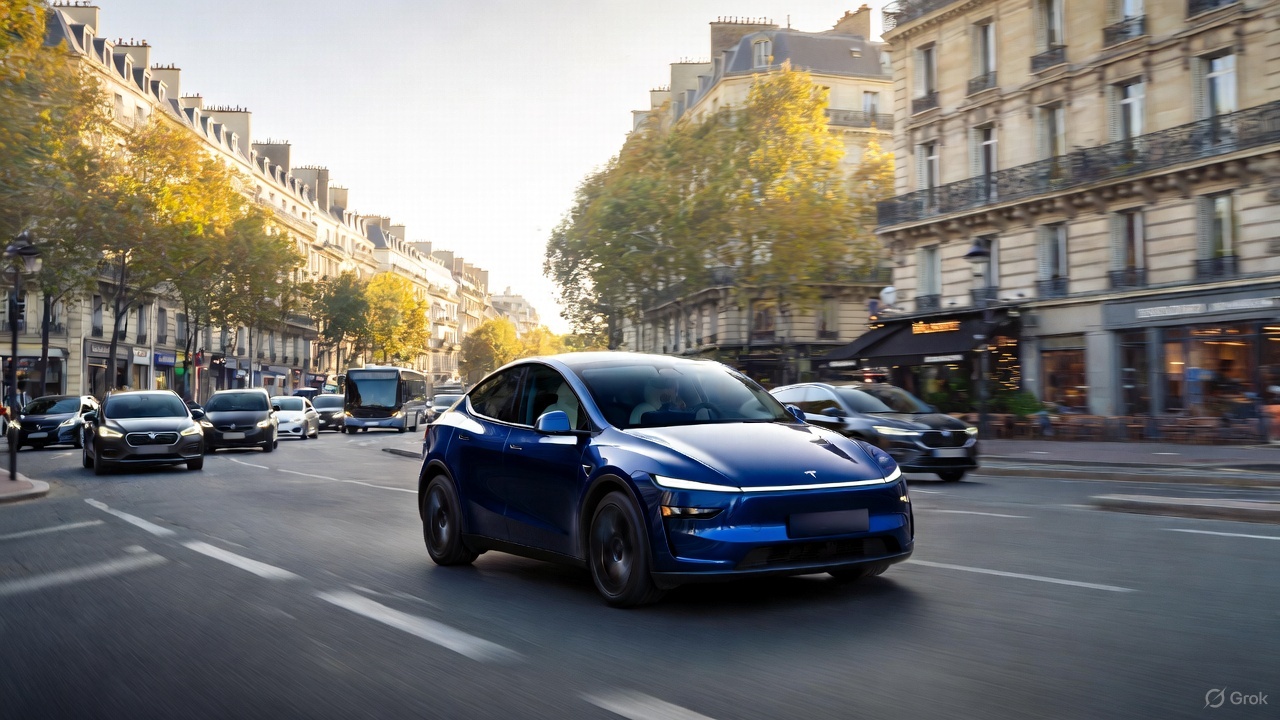
Tesla’s upcoming FSD Supervised system, set for a European debut pending regulatory approval, is showing notably refined behavior in real-world testing, including construction zones, pedestrian detection, and lane changes, as per a recent demonstration ride in Berlin.
While the system still required driver oversight, its smooth braking, steering, and decision-making illustrated how far Tesla’s driver-assistance technology has advanced ahead of a potential 2026 rollout.
FSD’s maturity in dense city driving
During the Berlin test ride with Auto Bild, Germany’s largest automotive publication, a Tesla Model 3 running FSD handled complex traffic with minimal intervention, autonomously managing braking, acceleration, steering, and overtaking up to 140 km/h. It recognized construction zones, braked early for pedestrians, and yielded politely on narrow streets.
Only one manual override was required when the system misread a converted one-way route, an example, Tesla stated, of the continuous learning baked into its vision-based architecture.
Robin Hornig of Auto Bild summed up his experience with FSD Supervised with a glowing review of the system. As per the reporter, FSD Supervised already exceeds humans with its all-around vision. “Tesla FSD Supervised sees more than I do. It doesn’t get distracted and never gets tired. I like to think I’m a good driver, but I can’t match this system’s all-around vision. It’s at its best when both work together: my experience and the Tesla’s constant attention,” the journalist wrote.
Tesla FSD in Europe
FSD Supervised is still a driver-assistance system rather than autonomous driving. Still, Auto Bild noted that Tesla’s 360-degree camera suite, constant monitoring, and high computing power mark a sizable leap from earlier iterations. Already active in the U.S., China, and several other regions, the system is currently navigating Europe’s approval pipeline. Tesla has applied for an exemption in the Netherlands, aiming to launch the feature through a free software update as early as February 2026.
What Tesla demonstrated in Berlin mirrors capabilities already common in China and the U.S., where rival automakers have rolled out hands-free or city-navigation systems. Europe, however, remains behind due to a stricter certification environment, though Tesla is currently hard at work pushing for FSD Supervised’s approval in several countries in the region.








